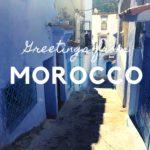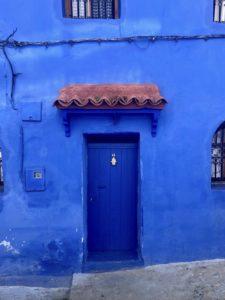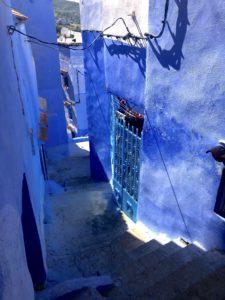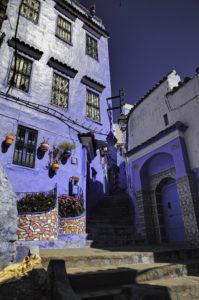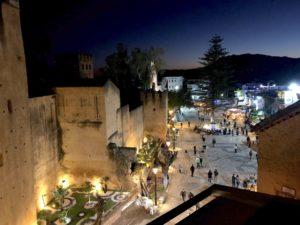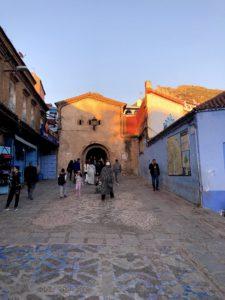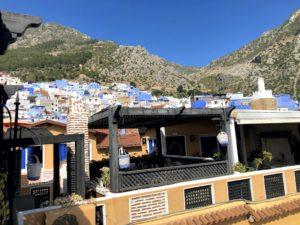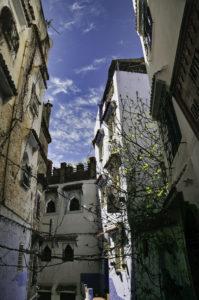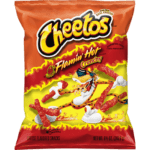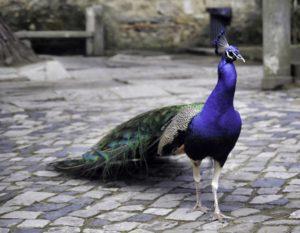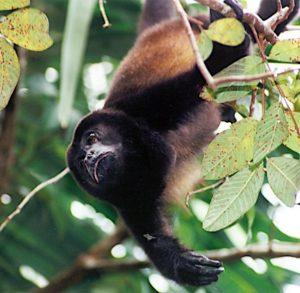After flying from Porto Portugal to Tangier Morocco, we were driven 70 miles south to Chefchaouen Morocco (pronounced Shaf-shāwan). The hour-and-a-half trip flew by as we peppered our driver, Hamid, with a barrage of questions about Morocco's mysterious “Blue City.” After each question, Hamid would knowingly smile and—in very good English—explain that, “I'm your driver, not your tour guide.” The implied, “you shitheads,” went tactfully unsaid.
The people of Chefchaouen Morocco are clearly not the country's most original.
This sun-drenched North African city is surrounded on every side by the dazzling radiance of nature: flashy flowers and foliage, brilliant birds and bees—it's a veritable color palette cornucopia of saturated hues.
When collectively deciding on a color to paint all their homes and businesses, the denizens of Chefchaouen could've chosen any of the nearly 10 million colors distinguishable to the human eye. They could've made a bold color choice, a statement that would've inspired future generations. They could've, but they didn't.
Chefchaouen chose the most boring color in the visible spectrum.
Disappointingly, they settled on the world's most common color…blue (real creative, guys). Why blue? No idea. Maybe they chose it because it reminds them of the sky or the sea. Or maybe because it's considered relaxed and calming. Or maybe because there was a sale at Benjamin Moore.
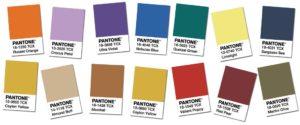
I guess I'll never really know why Chefchaoueners chose blue, mostly because I don't really care enough to look into it. The bottom line is a lovely walled city in the mountains of Morocco, mostly awash in blueness (blueocity? blueminousness? …whatever).
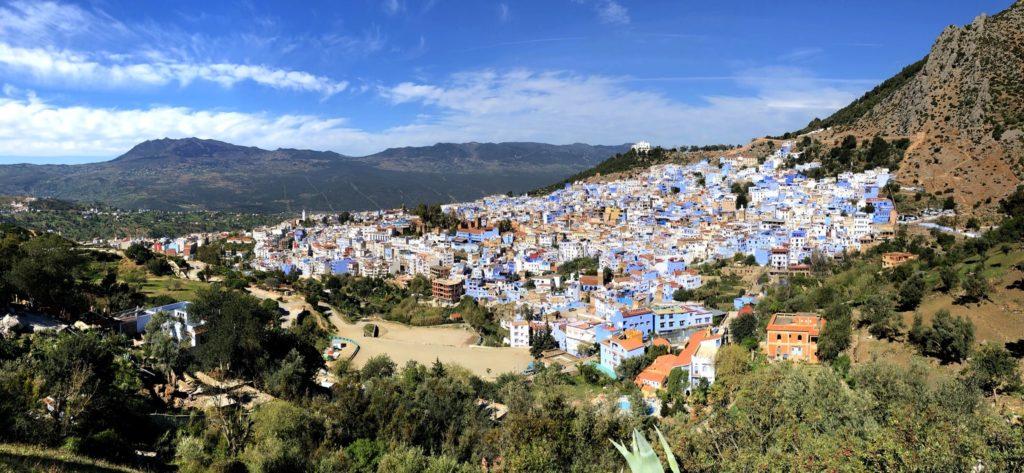
Chefchaouen isn't called Morocco's “Blue City” because it's super-depressing.
Naming Chefchaouen the “Blue City” seems more like a marketing ploy from the Moroccan Tourism Board than any organic nickname. It feels like they hired the branding agency who came up with the idea of painting Santorini all-white, and the agency came back with a 20-page PowerPoint® presentation that culminated with the word: “Blue.”
Regardless of what really happened, many parts of Chefchaouen are now painted—or “rinsed,” actually—with blue paint. I say many, because not everybody seems to be on the same page about this city-wide color scheme.
A lot of the homes and businesses are painted in light blue but, sadly, not the exact same lue (there goes my sale at Benjamin Moore theory). Worse, lots of structures are painted white like in Santorini, or simply left their natural brick and stone color. (WTF, did these people not get the memo?)
In total, the city is only about 50% blue (see main photo), but that's enough to live up to the name in my book. After all, if the Visitor's Bureau called it, “Morocco's Kind Of Blue-ish City,” tourism would tank because there just aren't enough Miles Davis fans left in the world.
Chefchaouen Morocco began as a humble casbah.
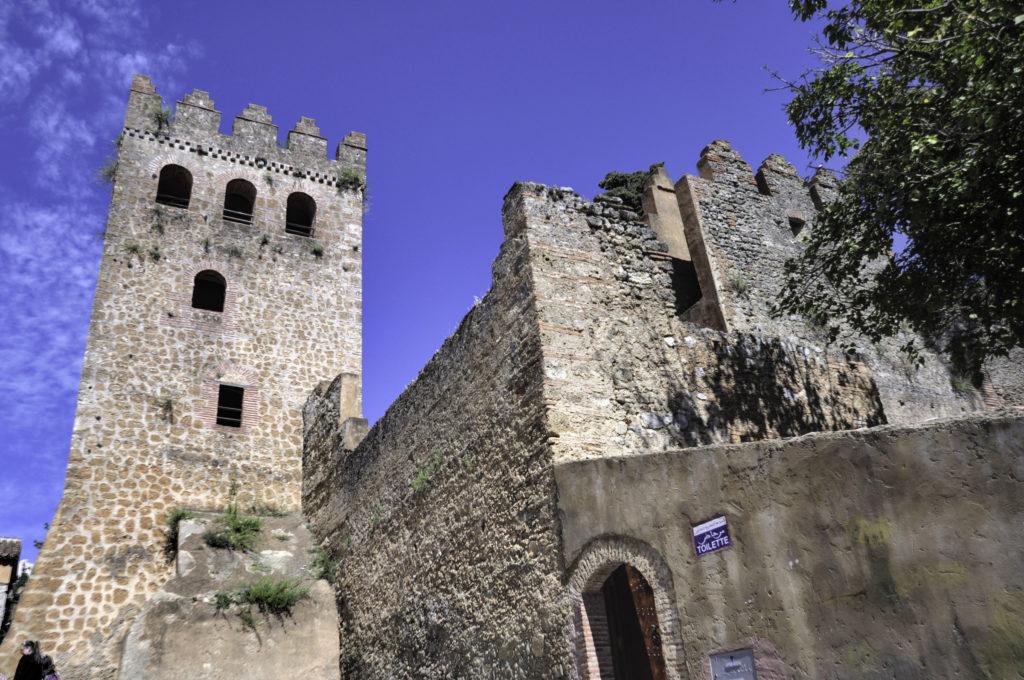
Inside Place Outa el Hammam, Chefchaouen's main square, there's an ochre-walled 15th-century fortress and dungeon—what's known in Northern Africa as a casbah, or kasbah if you're trying to be edgy, different, and annoying.
This ancient military outpost was built in 1471 by a distant descendant of the prophet Muhammad, Moulay Ali ibn Rashid al-Alami, a guy who probably name-dropped that fact a lot during negotiations with the contractor.
Strategically located hidden behind the Rif Mountains and close to the Fouara River, Chefchaouen's casbah was constructed to defend the city against the Iberian invasions. Currently, it's an ethnographic museum to defend the city's cultural and artistic history.
Over the centuries, a médina (or “Old Town”) sprouted up, surrounding the casbah, to handle trade and commerce for the increasing population. Numerous immigrants settled here after the “Reconquista,” a religious campaign which offered Spanish Muslims and Jewish citizens the option of converting to Catholicism, or being tortured to death.
Thanks to the unique geography of this area, Chefchaouen is today a vibrant city of over 42,000 and a popular tourist destination for Europeans looking to get away from…well, Europe.
Is a Médina one of those Tyler Perry movies?

No, you're thinking of Madea. A médina is a small town or market within a larger city. A remnant of medieval times, médinas are walled off from other parts of the city, and are made up of narrow streets full of tiny kiosks selling goods. The médina's high walls and narrow streets are often windowless to channel cool air throughout the area.
Sharif may not have liked the casbah, but we had no problem with it.
The aforementioned casbah is positioned right in the city's central plaza, Place Outa el Hammam. It never once rocked the whole time we were there. And since we never heard that “crazy casbah sound,” we didn't know what Sharif's beef with the place was.
Honestly, Chefchaouen Morocco was a bit sleepier than we usually like. On the plus side, we were able to get to bed early and get a good night's sleep…well, until the dawn call-to-prayer shattered the morning quiet with what sounded like—at least, to my Western ears—a neighbor using a gas-powered leaf-blower.
If the purpose of The Call is “to listen, to hear, and be informed,” then the audio should be clear and intelligible, right? Well, it's often not. I feel like the muezzins should have a bake sale or something, so they could afford some sweet JBL Pro All-Weather speakers. Just a thought.
Moroccan riads aren't just hotels designed by crazy people.

While in Chefchaouen Morocco, we stayed at Riad Hicham, a well-known guest house-style accommodation in the heart of the city. Formerly a simple, single-family home, this restored mansion is now a weird Goudy-esque hotel with a floor plan that can only be described as labyrinthine.
Architecturally, a Moroccan riad consists of multiple floors scattered with a baffling mix of rooms, doors, and stairs, all built around a central, Andalusian-style courtyard and garden. That's because the word riad—also spelled “riyad”—is derived from the Arabic term for garden which, in Islam, is associated with paradise.
Unlike Western houses which are ostentatious on the outside, the exteriors of riads are often modest to the point of being unidentifiable—most are unadorned with anything noteworthy, including windows. All of which makes locating your riad extremely difficult, especially after a night of binge-drinking (assuming you can find alcohol in this country).
Similar to early Greco-Roman architecture, a riad's “outside-in” design approach was used in hot climates to encourage the flow of cooling air through the domicile. It also proved popular in Islamic society because it allowed the separation of private family spaces (where families could argue) and public guest areas (where families could pretend everything was fine in front of guests).
Finding Riad Hicham in was the easy part.
Centrally located right on the city's plaza, Riad Hicham is a tourist trap in the most literal sense of the phrase. Once you venture inside, you'll never find your way out again. After check-in, guests typically walk up the flight of lobby stairs only to come back down days later to say, “Um, I can't find my room.” An employee is then dispatched to walk you to your room where you'll desperately remain for fear of getting immediately lost again if you ever leave.
No, no, it's not casbah, it's CAS-bah. No, I said, CASbah! CASbah! Push your tongue down, CASbah, yes, like that. No, push your tongue down. CASbah! No! No! Oh, forget it…
—Every Moroccan we talked to
Thankfully, if you do get lost, you won't die starving in the hallway because every floor has seating for the riad's restaurant. Happily, it's a very solid restaurant with traditional Moroccan dishes, a cheery and helpful staff, as well as a nice view overlooking much of the town—highly recommended.
If you walk around Chefchaouen Morocco, leave a trail of breadcrumbs.
Expanding out from Place Outa el Hammam, the outer limits of Chefchaouen's ancient médina are demarcated by a defensive wall made from beige rock and stone, clearly erected prior to the city's more recent “paint everything blue” mandate.
The so-called “streets” within the médina are, in reality, a dizzying maze of switchbacks and alleys meant to confuse invading armies and disorient tourists. For at least one of those design goals, I can personally attest to its success.
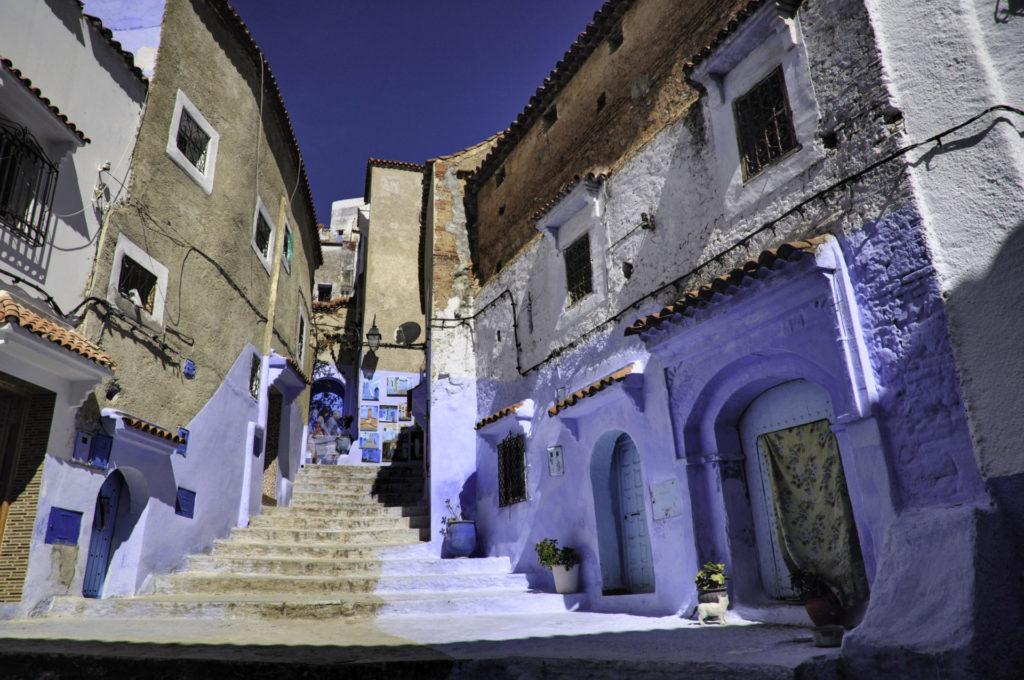
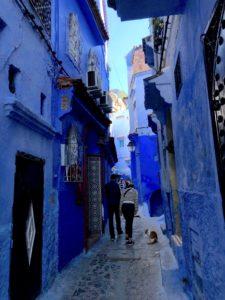
Finding your way around the médina is much like navigating the streets of Venice without using GPS. In Venice, however, you have the advantage of the city being more or less flat.
In Chefchaouen, on the other hand, the steep hills add a third dimension to contend with, making the trick of successfully navigating its narrow, twisting backstreets nigh impossible. If you have a tendency to get lost easily, Chefchaouen's médina could well be your final resting place.
Luckily, you can always ask one of the many “cultural appropriation” vendors for directions. They're the people happily selling traditional garb to un-woke tourists on the streets. Most of them are very nice and helpful, and many can speak enough English to help you find your way back to your riad.
Not all the cats, dogs, and monkeys of Chefchaouen are stoned.
The médina of Chefchaouen is somewhat overrun by feral cats, and a few anti-social dogs. Though they're a bit ornery and understandably hate tourists, the animals all seemed well-fed, so we weren't overly concerned about their welfare.
In fact, they were so well-fed that they got downright picky about what we offered them—for what it's worth, Flaming Hot Cheetos® got a hard pass (truly, there's just no accounting for taste).
The locals here coexist peaceably with all manner of wild and domesticated creatures, including goats, storks, camels, mules, horses, ostriches, and even peacocks.
Peacocks, I then learned, possess a very loud call that sounds like a construction digger's claw scraping a huge chalkboard. The sound is so grating and unpleasant that I had to stop pulling feathers out of one defiant peacock well before I had enough to make a hat.
Chefchaouen is one of Morocco's main producers of kief.
The Rif Mountains (pronounced “reef”), which lie beyond the stone walls of Chefchaouen Morocco, are some of the country's most fertile cannabis fields where the locals make kief. Kief is a cannabis concentrate that contains higher levels of THC, the principal psychoactive constituent of cannabis. Many people add kief to marijuana for a more intense, more Matthew McConaughey-type high.
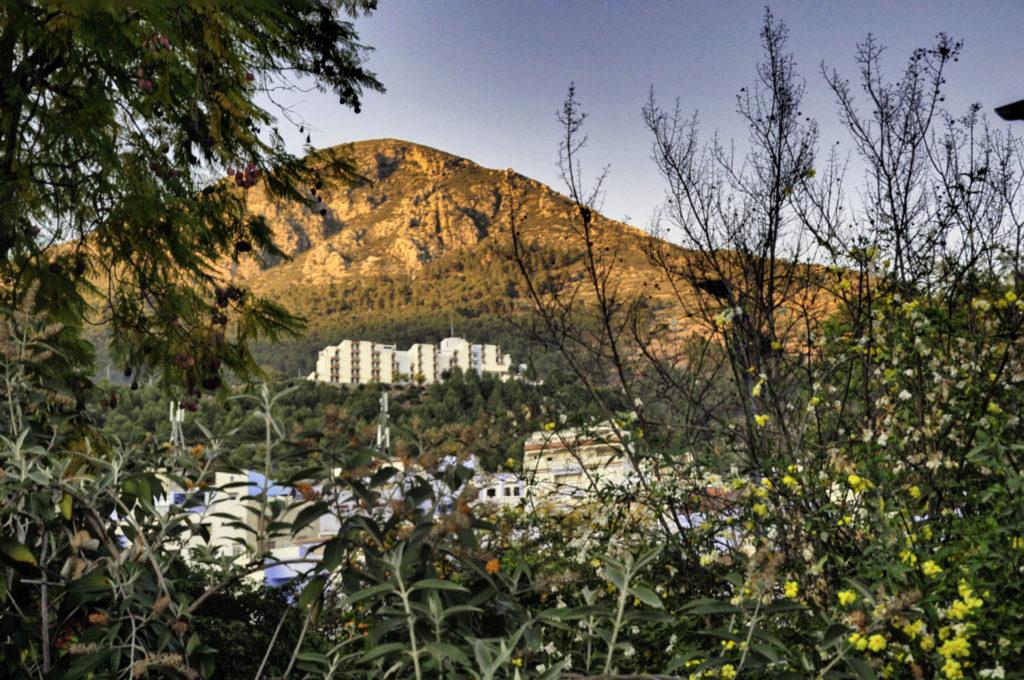
In Morocco, kief also refers to a traditional mix of finely-chopped marijuana with indigenous tobacco. So be very specific when you are soliciting drugs from strangers—you could end up very disappointed, or very effed up.
The Rif Mountains should be called the “Spliff” Mountains considering all the pot they grow there.
—Ba-da-bing! Hey, Is this thing on…?
In addition to nurturing cannabis plants, the mountainous area behind Chefchaouen are also home to a bunch of stoner monkeys. These endangered Barbary macaques get high on the local marijuana and then come down to the médina to watch humans do “people things.”
These plastered primates are endlessly fascinated by our complex systems of commerce and trade, our social customs, and our mostly hairless bodies. To baked monkeys, people-watching is probably much like Netflix (“Are you still watching Season 3 of Tourists Buying Souvenirs? Yes/No”).
So, would we ever go back to Chefchaouen Morocco again?
Chefchaouen was certainly an interesting place to visit, but would we have gone there had we not just “been in the neighborhood?” Probably not.
Would we recommend it as a side-trip to someone visiting Morocco? Of course, but not at the expense of other, more interesting places in Morocco.
More importantly, would we ever consider quitting our jobs, packing up our lives, and moving there, like we imagined while visiting Bali, Singapore, and Portugal? Definitely not. I mean, it's nippy up in those mountains, and we're not huge pot smokers. Also, I think being laughed at constantly by stoned monkeys would get old fast. But we headed to the Sahara Desert before we could find out.

